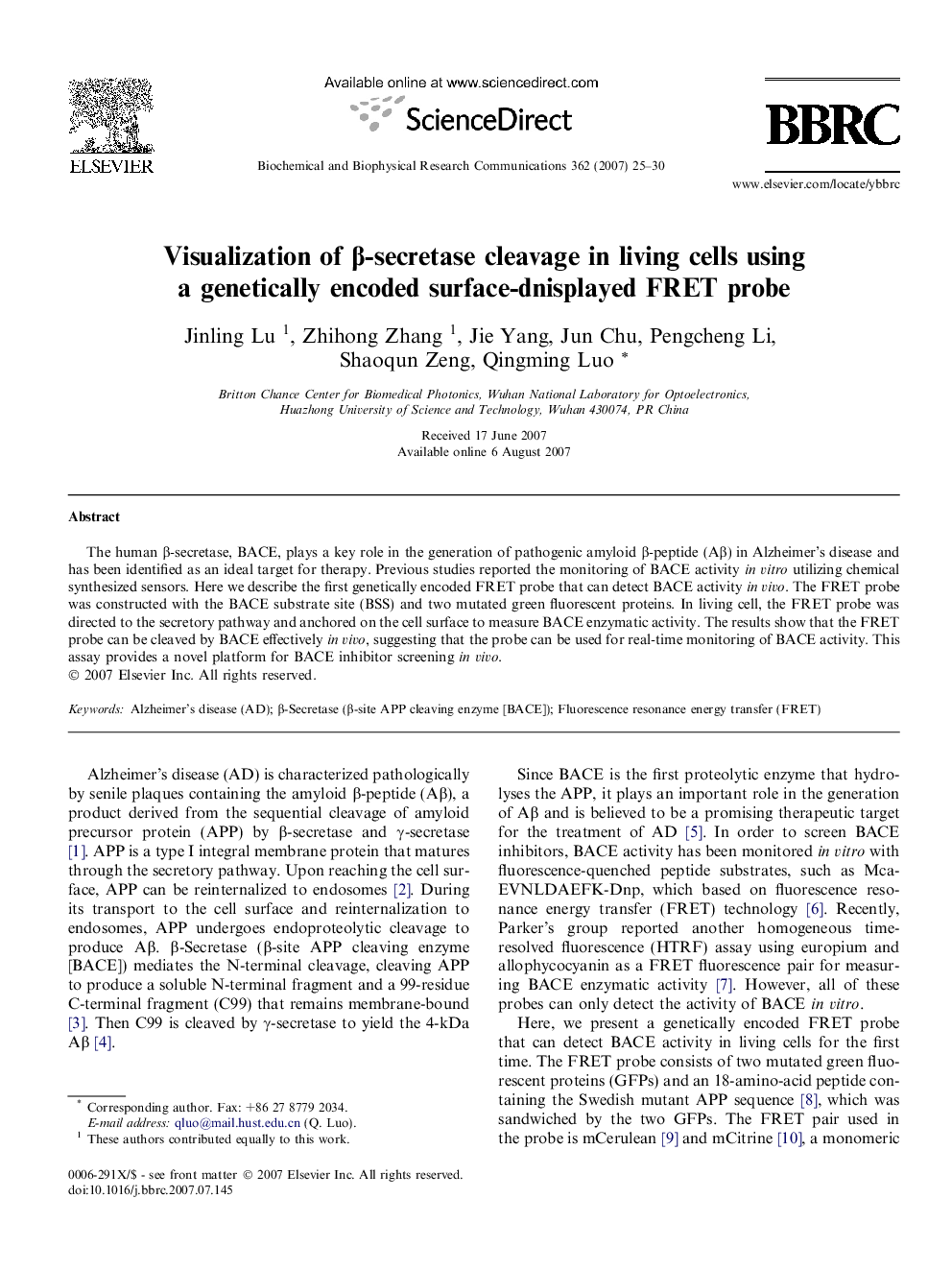| Article ID | Journal | Published Year | Pages | File Type |
|---|---|---|---|---|
| 1936468 | Biochemical and Biophysical Research Communications | 2007 | 6 Pages |
The human β-secretase, BACE, plays a key role in the generation of pathogenic amyloid β-peptide (Aβ) in Alzheimer’s disease and has been identified as an ideal target for therapy. Previous studies reported the monitoring of BACE activity in vitro utilizing chemical synthesized sensors. Here we describe the first genetically encoded FRET probe that can detect BACE activity in vivo. The FRET probe was constructed with the BACE substrate site (BSS) and two mutated green fluorescent proteins. In living cell, the FRET probe was directed to the secretory pathway and anchored on the cell surface to measure BACE enzymatic activity. The results show that the FRET probe can be cleaved by BACE effectively in vivo, suggesting that the probe can be used for real-time monitoring of BACE activity. This assay provides a novel platform for BACE inhibitor screening in vivo.
